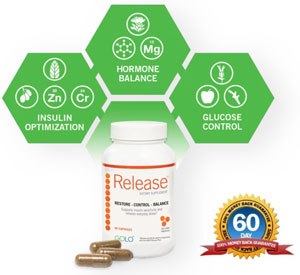Health
How can I improve my mental health through exercise?
Published
2 years agoon
By
mbkteam
Maintaining mental health has become a critical concern for many in today's fast-paced world. While there are numerous strategies to manage mental well-being, one often overlooked yet highly effective approach is physical activity. Scientific research consistently demonstrates that physical exercise offers a myriad of benefits for both the body and the mind. This article delves into how regular physical activity can significantly enhance mental health, providing compelling reasons and practical tips for incorporating it into daily life.
The Holistic Connection Between Body and Mind
Physical and mental health are inextricably linked. Exercise profoundly impacts brain function and emotional well-being. According to the Physical Activity Guidelines for Americans, regular physical activity improves brain health and cognitive function and reduces the risk of anxiety and depression. But how does this process work?
Improved Cognitive Function
Physical activity stimulates the production of chemicals that improve mood and brain function. When you exercise, your body releases endorphins and serotonin, natural mood lifters. These chemicals help combat stress and enhance cognitive functions such as memory and problem-solving skills. Engaging in activities that elevate your heart rate, such as running, swimming, or cycling, boosts blood flow to the brain, which enhances neural growth and connectivity. This biological response produces better focus, sharper thinking, and a more resilient mind.
Alleviating Anxiety and Depression
Anxiety and depression are among the most common mental health disorders affecting millions globally. Fortunately, physical activity can be pivotal in their prevention and management. Exercise reduces levels of the body's stress hormones, such as adrenaline and cortisol, while stimulating the production of endorphins, which act as natural painkillers and mood elevators. Regular exercise has been shown to reduce symptoms of both anxiety and depression, making it an essential tool for mental health management.
The Science of Movement and Mood
Understanding the science behind how physical activity influences mental health can further motivate individuals to integrate exercise into their daily routines. The Mayo Clinic explains that exercise can ease symptoms of depression and anxiety by:
- Releasing Feel-good Chemicals: Physical activity increases the production of endorphins, which help to reduce pain and enhance pleasure, leading to a sense of well-being.
- Reducing Immune System Chemicals: Exercise lowers levels of certain chemicals in the immune system that can worsen depression.
- Increasing Body Temperature: The rise in body temperature during physical activity has calming effects on the body, which can alleviate anxiety symptoms.
Practical Tips for Incorporating Physical Activity
Despite knowing the benefits, incorporating regular physical activity can be challenging, especially when life gets busy. However, simple strategies can make it easier to get moving:
Find an Activity You Enjoy
One of the most effective ways to maintain a consistent exercise routine is to choose activities you enjoy. Whether it's dancing, hiking, yoga, or playing sports, the key is to find something that makes physical activity feel more like a fun hobby than a chore.
Set Realistic Goals
Start small and gradually increase your activity level. Setting achievable goals helps to build confidence and create a habit. For instance, begin with a 10-minute walk around your neighborhood and gradually extend it as you become more comfortable.
Incorporate Movement into Daily Routine
Integrating physical activity into your daily routine can be as simple as taking the stairs instead of the elevator, parking further away from your destination, or engaging in household chores like gardening and cleaning. Every bit of movement counts and accumulates to improve your overall activity level.
Use Technology for Motivation
Numerous apps and devices are designed to track physical activity and motivate you to stay active. Fitness trackers, smartwatches, and mobile apps provide reminders, track progress, and offer virtual coaching, making staying committed to your fitness goals more manageable.
Addressing Seasonal Challenges
Seasonal changes can make maintaining a consistent exercise routine challenging. Colder temperatures and shorter days during the fall and winter months can make it difficult to stay motivated. Finding creative ways to stay active regardless of the weather is essential.
Indoor Activities
When outdoor activities become less appealing due to weather conditions, focus on indoor exercises. Home workouts, indoor swimming, and gym sessions are great alternatives. You can also set up a makeshift gym at home using everyday items like water bottles for weights or investing in essential equipment like resistance bands and yoga mats.
Seasonal Sports
Embrace seasonal sports that align with the weather. For example, skiing, ice skating, and snowshoeing are excellent winter activities that keep you moving while enjoying the season. Engaging in these activities provides physical benefits and helps break the monotony of routine workouts.
The Role of Social Support
Social interaction is crucial to mental well-being; combining it with physical activity can amplify the benefits. Participating in group fitness classes, joining sports teams, or simply walking with friends can provide the social support needed to stay motivated and make exercise more enjoyable.
Group Activities
Joining group activities like dance classes, cycling clubs, or hiking groups provides a sense of community and accountability. The camaraderie and encouragement from group members can make workouts more engaging and help you stick to your fitness routine.
Family and Friends
Incorporate physical activities into family time or social gatherings. Organize weekend hikes, play sports with your children, or invite friends to join you for a workout session. Making exercise a social activity can strengthen relationships while promoting physical and mental health.
The Long-term Benefits
The benefits of physical activity extend beyond immediate improvements in mood and cognitive function. Long-term engagement in regular exercise contributes to sustained mental health and overall well-being. Consistent physical activity is associated with lower rates of mental health disorders, improved quality of life, and increased longevity.
Reduced Risk of Chronic Diseases
Regular exercise reduces the risk of developing chronic diseases like heart disease, diabetes, and certain cancers. By maintaining physical fitness, individuals can enhance their immune system, improve cardiovascular health, and manage weight, reducing the overall disease burden and enhancing quality of life.
Enhanced Sleep Quality
Quality sleep is essential for mental and physical health. Physical activity helps regulate sleep patterns, making it easier to fall and stay asleep. Improved sleep quality leads to better mood, increased energy levels, and enhanced cognitive function, creating a positive cycle of well-being.
Increased Self-esteem and Confidence
Achieving fitness goals and maintaining an active lifestyle can boost self-esteem and confidence. The sense of accomplishment from reaching milestones, combined with physical changes in the body, contributes to a positive self-image and greater self-worth.
Conclusion
Incorporating regular physical activity into your life is a powerful way to enhance mental health and overall well-being. Understanding the connection between physical and mental health, recognizing the scientific benefits, and adopting practical strategies can help you stay motivated and committed to an active lifestyle. Embrace the transformative power of movement and unlock a healthier, happier life.
For more detailed information and tips on how to get started, check out the Move Your Way® video and explore additional resources on AARP dedicated to promoting exercise and mental health.













